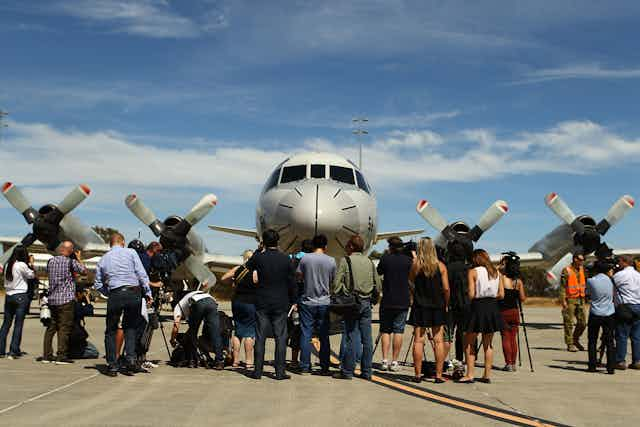Air crash investigators on flight MH370 will need to counter the public demand for a quick answer as they begin the long-term safety analysis.
What happened to the Malaysia Airlines Boeing 777 will likely remain a mystery for some time, even if or when any wreckage from the southern Indian Ocean is finally identified.
At the moment we still don’t know what happened to the plane carrying 239 passengers and crew from Kuala Lumpur to Beijing.
All we have is the Malaysian Prime Minister Najib Razak’s announcement that the plane is now believed to have crashed with no survivors.
But the urge to make sense of it all and to find a scapegoat is a human tendency. It’s also natural for the travelling public and those who are awaiting news on the loved ones onboard the plane to seek answers.
The investigation aims
The goal of any safety investigation is to understand what happened, identify any lessons learned and implement any safety actions needed to prevent a tragedy like this happening again.
The systems safety perspective teaches us these three important lessons for this investigation that counter that initial urge to find answers quickly.
The main principle of a systems safety perspective is that several contributing factors may be found. They could be in the technology and crew operating close to the accident. They could also be in different organisational elements whose decisions and actions are further removed from the accident, both in time and place.
Part of what went wrong with flight MH370 may be a symptom of underlying issues in the wider system. If these elements remain unaddressed and only people and technology operating close to the accident are looked at, the safety issue may occur again for another crew or plane.
The Spanish train crash
The major rail accident in Santiago de Compostela, Spain, on 24 July 2013 was shaped by factors across the rail transport system, most of which were beyond the control of the driver.
But initial reports focussed heavily on the speeding of the driver. The driver, was readily blamed and blamed himself for this accident.
From a systems perspective this accident was waiting to happen. For example, that particular bend in the rail track was known to be dangerous but nothing had been done about it. The route the train was travelling on was equipped with an automatic speed control system (European Rail Traffic Management System), but this system was not in place at the part of the track where the accident happened.
If these systems safety factors across the rail system remain unaddressed the accident may happen again to other drivers.
The systems safety perspective also reminds us that accidents may not have been caused by one single failure. Rather, it may have been an unlucky concurrence of events and behaviour that have happened many times before in isolation.
The Concorde air disaster
Consider the Air France Flight 4590 which crashed on 25 July 2000 just minutes after takeoff from Charles de Gaulle International Airport, near Paris, on its journey to John F Kennedy International Airport in New York, US. All 109 passengers and crew were killed. Four others died on the ground.
But this accident had no single cause – the investigation found it was such an unlucky concurrence of events that led to the crash.
Tyres had exploded in the past. False alarms had gone off before in the cockpit. But on the day of the Concorde crash, it all happened at the same time and all during the time critical take-off phase of the flight.
- The Concorde ran over a metal strip left on the runway by a Continental Airlines airplane that had just taken off
- The Concorde’s tyres exploded and this explosion let to a fuel leak
- As a result fuel entered the engine and this caused a fire
- The false alarms led the pilots to shut down engine number 2 rather than engine number 1 which was losing thrust.
This all combined rapidly at take off and soon the pilots entered a scenario in which they lost control of the plane.
If the events had happened in isolation or in different combinations, we may not have seen this accident occur.
Continental Airlines was found criminally responsible for the crash but later cleared on appeal.
Before anything’s finalised
It is tempting to reassure the public that air travel is safe by quickly “finding and fixing” each factor found to have contributed to the accident.
If the fate of flight MH370 was an unlucky concurrence of things that have happened in isolation before on other flights where nothing tragic has happened, then any improvements should not compromise the safety of future flights should the same thing happen again in isolation.
The system safety perspective should also remind investigators that if whatever happened to flight MH370 was shaped by factors across the aviation system, then safety improvements will influence operations across the whole aviation system.
That’s why it’s important to take time in any investigation into flight MH370. Once complete, the entire suite of safety actions recommended and their potential impact on the whole aviation system (people, technology and organisations involved) should be carefully considered before anything is finalised.

